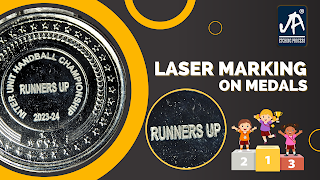Revitalizing Surfaces: The Power of Sand Blasting
In the world of manufacturing and restoration, the process of sand blasting has proven to be a transformative technique for revitalizing surfaces and breathing new life into old and worn-out materials. With its ability to remove impurities, create textures, and prepare surfaces for further treatments, sand blasting has become a powerful tool in various industries. In this blog post, we will explore the significance of sand blasting services, the advantages of combining it with Teflon coating services, and the potential of 3D laser engraving in surface revitalization.
Understanding Sand
Blasting Services:
Sand blasting, also known as abrasive blasting, is a surface
preparation method that involves propelling abrasive materials at high velocity
to clean, smooth, or etch a surface. The abrasive materials used can vary,
including sand, silica, steel grit, aluminum oxide, and more. The choice of
abrasive material depends on the specific application and the desired outcome.
Sand blasting
services are widely employed in industries such as automotive,
construction, aerospace, and restoration. The process is particularly effective
in removing rust, old paint, and other surface contaminants, preparing surfaces
for coating or painting, and creating decorative textures.
The Synergy of Sand
Blasting and Teflon Coating Services:
Combining sand blasting with Teflon coating
services can yield remarkable results in surface treatment. Teflon, also
known as polytetrafluoroethylene (PTFE), is a versatile and durable non-stick
coating material that offers numerous advantages when applied to properly
prepared surfaces.
Before applying Teflon coatings, sand blasting can be
employed to clean and roughen the surface, ensuring excellent adhesion of the
coating. This process enhances the durability and longevity of the Teflon
coating, making it ideal for applications where reduced friction, anti-stick
properties, and resistance to heat, chemicals, and corrosion are required.
Advantages of Teflon
Coating Services:
1. Non-Stick
Properties: Teflon coatings are renowned for their exceptional non-stick
properties, making them suitable for a wide range of applications, from
cookware to industrial moulds.
2. Chemical and Heat Resistance:
Teflon coatings can withstand extreme temperatures and provide excellent
resistance to chemicals, acids, and solvents, adding durability to coated
surfaces.
3. Reduced Friction:
The low coefficient of friction of Teflon coatings contributes to smoother
movement, reduced wear, and improved performance in mechanical applications.
4. Easy Cleaning:
Surfaces coated with Teflon are easy to clean and maintain, as most substances
do not adhere to the non-stick surface.
Exploring the Potential
of 3D Laser Engraving:
In addition to sand blasting and Teflon coating services, 3D laser engraving
is an innovative technique that brings endless creative possibilities to
surface revitalization. 3D laser engraving uses high-powered lasers to create
intricate and precise patterns or designs on various materials.
This technology is commonly used in artistic applications,
such as engraving personalized designs on jewellery, trophies, and decorative
items. However, its potential goes beyond aesthetics. In industrial settings,
3D laser engraving can be used for branding, serializing products, or creating
functional textures for improved grip and performance.
Conclusion:
The power of sand blasting lies in its ability to rejuvenate
surfaces by removing impurities, preparing them for further treatments, and
creating textures. When combined with Teflon coating services, the results are
further amplified with added non-stick properties, chemical resistance, and
reduced friction. Furthermore, 3D laser engraving opens up new avenues for
creativity and customization in surface revitalization.
From restoring vintage cars to enhancing industrial
equipment, the trio of sand blasting, Teflon coating services, and 3D laser
engraving showcases the artistry and functionality that can be achieved in
surface treatment. Embracing these techniques can revitalize surfaces, breathe
new life into products, and elevate aesthetics and performance across
industries.



Thanks for the engaging and informative post! Loved the insights. Excited for more content like this. Great job!
ReplyDelete